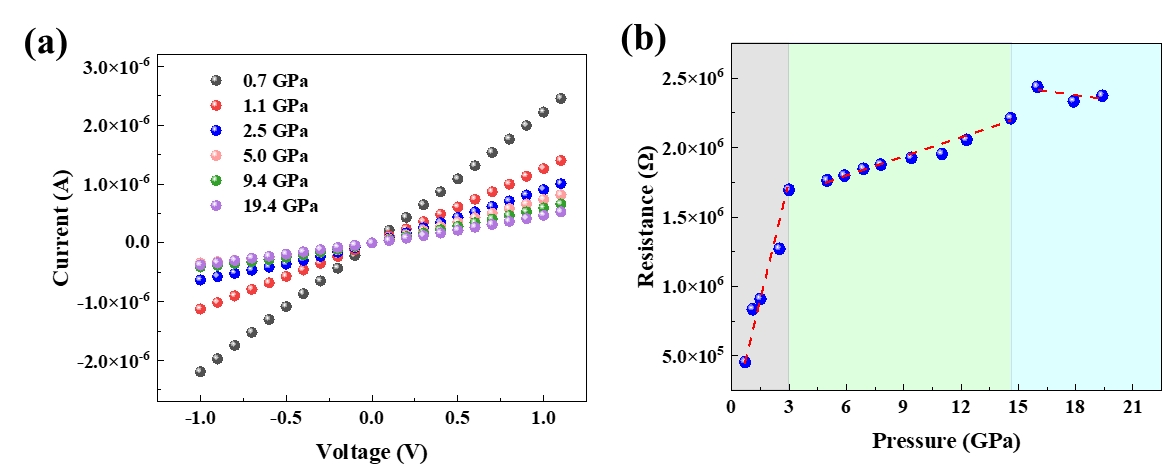
A recent study published in Physical Review B has resolved longstanding controversies regarding the phase transitions of hafnium oxide (HfO₂) in the low-pressure region.
Conducted by researchers from the Hefei Institutes of Physical Science of the Chinese Academy of Sciences, in collaboration with Southwest Jiaotong University, the study combines high-pressure electrical transport experiments, high-pressure Raman spectroscopy, and first-principles calculations to reveal the structural evolution of HfO₂ and its impact on electrical properties.
HfO₂ is a promising ferroelectric material compatible with Complementary Metal-Oxide-Semiconductor technology, with potential applications in memory and low-power devices. While it lacks ferroelectricity under normal conditions, strain or doping can induce a non-centrosymmetric orthorhombic phase, leading to ferroelectric behavior—highlighting the intricate relationship between structure and properties. High pressure serves as a powerful tool for probing and controlling such structural transformations. However, past studies have reported conflicting results on low-pressure phase transitions, particularly between Raman spectroscopy and X-ray diffraction findings, creating uncertainties in understanding its behavior.
To address this issue, the researchers employed high-pressure electrical transport experiments alongside high-pressure Raman spectroscopy and density functional theory calculations. Using a diamond anvil cell, they conducted in-situ monitoring of pressure variations through ruby fluorescence measurements.
In the electrical transport experiments, a sandwich structure of Au/HfO₂/Au was used, with insulating treatment applied to both sides of the steel gasket to prevent short circuits. Raman measurements were carried out using a 532 nm laser in a backscattering geometry.
The results showed that HfO₂ undergoes a phase transition from the monoclinic phase to an orthorhombic-I phase at around 3.5 ± 0.5 GPa, followed by a second transition to an orthorhombic-II phase at approximately 15.2 ± 0.6 GPa. Furthermore, when HfO₂ was doped with 5% yttrium, the transition pressures were found to decrease, indicating that doping plays a key role in modifying structural.
These findings provide valuable insights for a deeper understanding of the relationship between its structure and electrical transport properties, according to the team.

Schematic diagram of the high-pressure charge transport experimental. (Image by PAN Xiaomei)

(a) Representative I-V curves of 5% Y-doped HfO2. (b) The pressure dependence of the resistance. (Image by PAN Xiaomei)

86-10-68597521 (day)
86-10-68597289 (night)

52 Sanlihe Rd., Xicheng District,
Beijing, China (100864)

